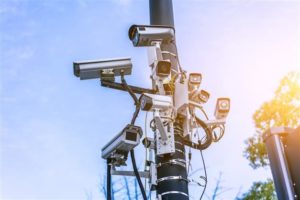North Korea is buying Chinese surveillance cameras in a push to tighten control, report says
Seoul (South Korea): North Korea is putting surveillance cameras in schools and workplaces and collecting fingerprints, photographs and other biometric information from its citizens in a technology-driven push to monitor its population even more closely, a report said Tuesday.
The state’s growing use of digital surveillance tools, which combine equipment imported from China with domestically developed software, threatens to erase many of the small spaces North Koreans have left to engage in private business activities, access foreign media and secretly criticise their government, the researchers wrote.
But the isolated country’s digital ambitions have to contend with poor electricity supplies and low network connectivity. Those challenges, and a history of reliance on human methods of spying on its citizens, mean that digital surveillance isn’t yet as pervasive as in China, according to the report, published by the North Korea-focused website 38 North.
The study’s findings align with widely held views that North Korean leader Kim Jong Un is stepping up efforts to tighten the state’s control of its citizens and promote loyalty to his regime.
These efforts were boosted by the Covid pandemic, during which the North imposed stringent border controls that were maintained for three years before a cautious reopening in 2023.
New laws and recent reports of harsher punishments suggest that the government is cracking down on foreign influence and imported media, likely helped by fences and electronic monitoring systems installed on the border with China during the pandemic.
“Having seen that it’s possible to close the border this tightly, I think they are now keen to keep it that way,” said Martyn Williams, an analyst who co-authored the study with Natalia Slavney.
“In terms of broader surveillance across the country, the pandemic could have played a part, but I think a much bigger role has been played by the fast-reducing cost of surveillance equipment,” Williams said.
The report examined North Korean surveillance technologies through information gained from domestic and international media coverage and publicly announced research at North Korean universities and state organisations. The researchers also said they interviewed 40 North Korean escapees about the surveillance they experienced when they lived in the country and, through unspecified partners, surveyed 100 current North Korean residents in 2023 via phone, text messages and other forms of encrypted communication to ensure their safety.
State media reports show that video surveillance is becoming more common at schools, workplaces and airports. The cameras are mostly sourced from Chinese vendors and range from basic video feeds to more advanced models that include features like face recognition.
Experts have warned that China is exporting the technology that powers its AI-powered surveillance to countries around the world. Cameras are also widespread in factories, government buildings and other workplaces, both to improve security and to prevent theft, while facial recognition systems have been used to record visitors at Pyongyang’s Sunan airport since 2019.
North Korea has also been expanding its network of traffic cameras beyond Pyongyang since 2021, installing them at major roads heading into and out of the city, likely for the purpose of automatically recording licence plates, the report said.
Comments




 Raja Warring to contest againt BJP’s Ravneet Bitu from Ludhiana
Raja Warring to contest againt BJP’s Ravneet Bitu from Ludhiana Student protests over Israel-Hamas war roil US campuses ahead of graduations
Student protests over Israel-Hamas war roil US campuses ahead of graduations Russian ex-spy mastered art of ‘sexpionage’ feels being ‘brainwashed’
Russian ex-spy mastered art of ‘sexpionage’ feels being ‘brainwashed’ Uber Cup badminton: India’s young women’s squad beats Canada 4-1
Uber Cup badminton: India’s young women’s squad beats Canada 4-1 Nominees take digital route to strike rapport with voters
Nominees take digital route to strike rapport with voters Indian man jailed in UK for 16 years for attempted murder of ex-girlfriend
Indian man jailed in UK for 16 years for attempted murder of ex-girlfriend 3 Indo-US women killed in US as overspeeding SUV goes airborne, crashes into trees
3 Indo-US women killed in US as overspeeding SUV goes airborne, crashes into trees Indians Immigrate To Canada In Record Numbers
Indians Immigrate To Canada In Record Numbers Punjab CM mocks ‘voiceless’ Sunny Deol, kickstarts Kalsi’s campaign in Gurdaspur
Punjab CM mocks ‘voiceless’ Sunny Deol, kickstarts Kalsi’s campaign in Gurdaspur First Sikh court opens in UK to deal with family disputes
First Sikh court opens in UK to deal with family disputes Diaspora celebrates Himachali culture at California event
Diaspora celebrates Himachali culture at California event 42-year-old Indian, wanted for assault, shot dead by US police
42-year-old Indian, wanted for assault, shot dead by US police